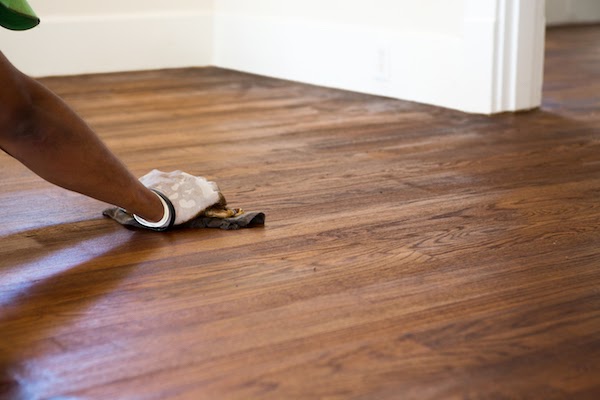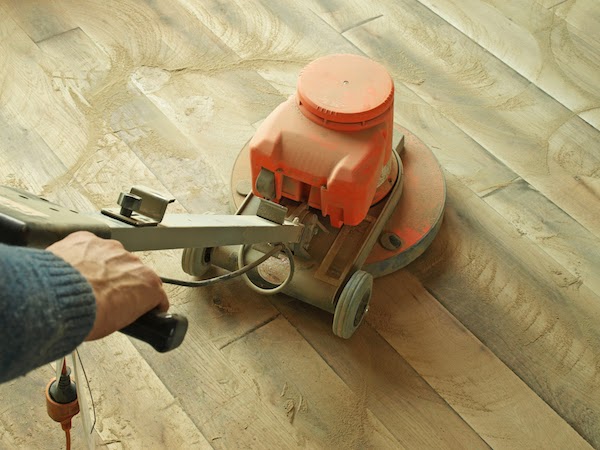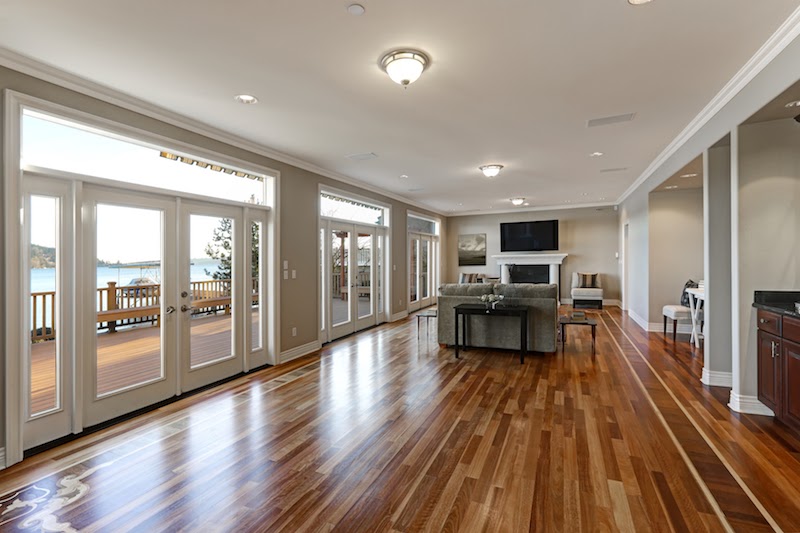Updating the flooring in your home can make a dramatic difference but this update often comes with a high price tag. If you’re thinking about replacing your old hardwood flooring, you should also consider refinishing as an option. Refinishing is often cheaper and easier than installing new hardwood floors. To find out more about your options, we reached out to an expert who does both refinishing and new floor installation. We spoke to Scott Newman, founder and CEO at NewRidge Refinishing Group Inc to find out more about the process so you can make an informed decision for your home.
When it comes to flooring options, there are two things most homeowners consider: cost and appearance. Scott believes that homeowners should also consider more practical factors, such as the lifespan of the product and how it will be used in your daily life. This way you can find a product that will last and look great for your home. Many homeowners do not consider resurfacing their existing wood floors instead of buying new. Here’s what’s involved in resurfacing or refinishing your floors.
Process of Refinishing Existing Wood Flooring

According to Scott, here is what you can expect when going through the process of refinishing your existing hardwood flooring.
Timeline:
As with any home improvement project, the overall area and scope of the project will greatly influence the timeline. As a general rule of thumb, a wood floor refinishing project will require about three to five days to complete. Keep in mind that you will have to leave your home during the application of the stain or finish to your floors. This is due to the odours and chemicals that arise when applying the stain or finish. Your choice of stain or finish will impact how long this process will take. Scott adds that luckily due to consumer demand there are now a number of durable low VOC finishing options with minimal lingering odour.
Cost:
One of the major advantages of refinishing your existing floors is the cost savings. It is significantly cheaper and easier to update what you already have than installing new. Unlike installing new, resurfacing an existing wood floor does not require:
- Labour costs for removal of your existing flooring and disposal fees
- Preparing the subfloor area for a new product
- Time and labour costs for installing the new flooring
This means that you will be saving all of the money you would have spent on paying for your old floors to be removed so new flooring can be laid. You will also save a significant amount on labour costs.
Pro Tip — Hire a precision minded professional to refinish your wood floors. Sanding mistakes brought about by lack of skill or experience can compromise the longevity of your wood floor or require replacement.
Service Life:
After your floors have been refinished, the lifespan of your new floors is dependent upon proper maintenance and care. The best way to care for your new floors is to lightly dust mop the floor using a tack cloth lightly dampened with an approved cleaner. Scott says that with proper maintenance, a professionally refinished floor typically lasts an average of ten years in a residential home.
Tips for Hiring a Floor Refinishing Pro

When it comes to hiring a pro for your flooring project, you want to find one who has your best interest in mind. This means finding a company that is considerate of your time. Scott says that a true professional will value both their time and yours, which is why they will use the best products combined with their knowledge to get you the best results.
In addition, looking at a company’s HomeStars reviews is a great way to learn more about them. Not only can you read comments from past customers, but you’ll also be able to learn more about how the company operates and treats its customers. Be sure to look at their responses to customer reviews.
Pro Tip — Be sure to ask a potential pro the more difficult questions about processes or products. How they answer will help you identify the best pros.
Costs
Your flooring decision might be swayed when it comes to appearance, but there’s one deciding factor that never lies, numbers. Below are the approximate costs for both a floor refinishing project and a new floor installation.
Refinishing Existing Flooring
Refinishing your floors includes sanding the existing flooring, buffing between coats, and applying coats of stain. While there are many factors that go into pricing a specific job, a typical floor refinishing project can cost about $2000-$4000 plus tax. On average you can expect to pay about $2,500 for a refinishing project. This cost includes both labour and materials. To find out how much your project will cost, reach out to a pro who can give you a custom quote.
New Floor Installation
Installing new floors is a more involved process and therefore costs more. You will need to pay to remove and dispose of the existing flooring, which must be done before the installation can begin. Next, you will have to pay for the new flooring material which will impact your cost the most. Once it has been installed, your new flooring project will cost you approximately $6000-$10,000 plus tax. Again, your price will vary depending on multiple factors, especially the type of new floor material chosen.
There are many factors that go into deciding whether to refinish your flooring. When considering the costs and time it takes to update your current floors, refinishing might be an option for you. To help you decide, you can always speak to a refinishing specialist. They will be able to best tell you if it is an option for your home. In the case that it’s not an option, they will be able to provide you with alternatives. Take Scott’s advice into consideration and be sure to read reviews and ask the tough questions before you hire any flooring pro.
NewRidge Refinishing Group Inc has nearly 400 reviews from customers, and as a result, they have a near-perfect Star Score, which has earned them the coveted HomeStars Best Of award every year since 2009. To learn more about them and to read some of their reviews, check out their HomeStars profile.
